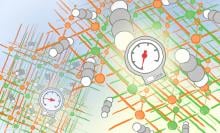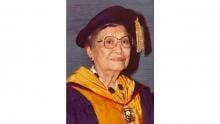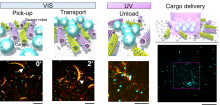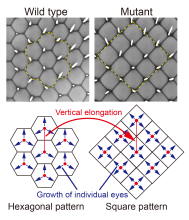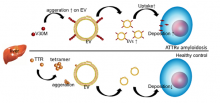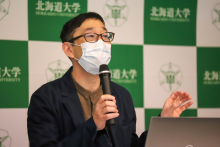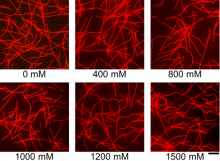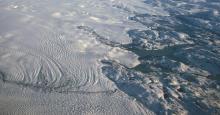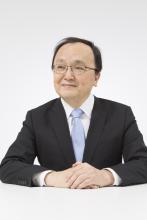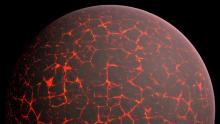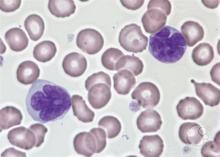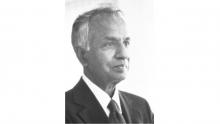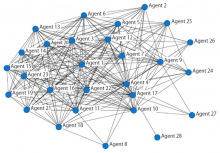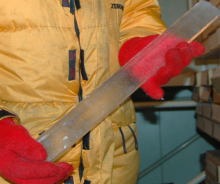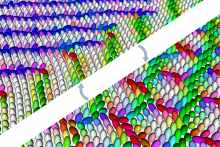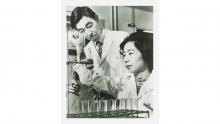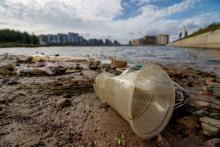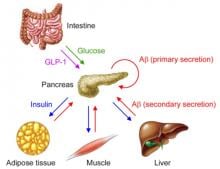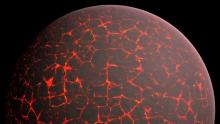Science
News
21 Apr 2022
Giants in History: The research of Filipino pharmaceutical chemist Luz Oliveros-Belardo (3 November 1906 – 12 December 1999) focussed on essential oils and other chemicals derived from native Philippine plants.
20 Apr 2022
In a global first, scientists have demonstrated that molecular robots are able to accomplish cargo delivery by employing a strategy of swarming, achieving a transport efficiency five times greater than that of single robots.
20 Apr 2022
Tile patterns in which the same shape is laid out without gaps are found in the compound eyes of insects. Hexagonal tile patterns are common while shrimp eyes have a square pattern. We investigated tile pattern formation using Drosophila and revealed that the compound eye tile pattern is controlled by a geometrical division mechanism, Voronoi tessellation, in addition to physical constraints determined by the combination of the regular distribution and growth of the individual eyes.
18 Apr 2022
An international team of researchers from India and Singapore has successfully developed a novel coating with enhanced water repellent properties using natural material from the waste crab shell.
14 Apr 2022
Bacteria hitchhike on red blood cells, New model simulates effects of exercise on muscles, Argon found in air of ancient atmosphere and Revealing emergent elastic fields of chiral crystals. Read all in the April Editor's Choice and this month's Asia Research News 2022 magazine pick - Asia's race to outsmart antimicrobial resistance.
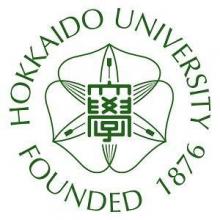
13 Apr 2022
Helping solve social and global environment issues with agriculture, forestry, and oceanography research combined with the latest technologies
12 Apr 2022
Researchers at Kanazawa University elucidate in Frontiers in Molecular Biosciences how small biocontainers enclosed by membranes are involved in a disease called ATTRv amyloidosis.
10 Apr 2022
A team of materials researchers from India, Thailand, Malaysia, China and UK has successfully produced a fibre reinforced polymer composite material using natural fibres from the coconut stalk.
10 Apr 2022
Malaysian and UK medical device and composite materials experts have partnered up to research into using natural fibres for prosthetic limb technology to lower the cost of the prosthesis
08 Apr 2022
A team of international researchers, led by Associate Professor Masaki Eda of the Hokkaido University Museum, have discovered that the oldest type of poultry ever domesticated may have been geese. The study involved interdisciplinary research of bones excavated from Tianluoshan site in the lower Yangtze River valley, Zhejiang Province, China.
07 Apr 2022
The molecule trimethylamine N-oxide (TMAO) can be used to reversibly modulate the rigidity of microtubules, a key component of molecular machines and molecular robots.
07 Apr 2022
Giants in History: Purnima Sinha (12 October 1927 – 11 July 2015), the first Bengali woman to receive a doctorate in physics, analysed clay structures using x-ray equipment that she built from salvaged World War II-era parts.
06 Apr 2022
Climate changes in the tropical Pacific have temporarily put the brakes on rapid warming and ice melting in Greenland.
04 Apr 2022
Distinguished Professor Hiroki Shirato of Hokkaido University is one of the nine recipients of the Japan Academy Prize in 2022, for his groundbreaking work on “Biomedical and Engineering Research about Real-time Tumor Tracking Radiotherapy/Particle Beam Therapy against Cancer.”
04 Apr 2022
伝統的な日本の大学のカルチャーの殻を破り、フラットで国際的な研究所として注目を集める東京工業大学地球生命研究所(ELSI)。今年で10年目を迎えたELSIの魅力や運営のコツについて廣瀬敬前所長が語った。
04 Apr 2022
東京工業大学地球生命研究所(ELSI)は、エビデンスに基づくアウトリーチを展開することで、科学コミュニケーション専門トレーニングの大切さを積極的に発信している。日本の高等教育機関と研究機関での研究アウトリーチ活性化の先駆けとなることを目指す。
31 Mar 2022
Gene editing technology has been used to pinpoint new molecular targets for treating an aggressive form of leukemia in adults.
30 Mar 2022
Giants in History: Subrahmanyan Chandrasekhar (19 October 1910 – 21 August 1995) was an Indian astrophysicist who studied the structure and evolution of stars.
30 Mar 2022
A simulation of stakeholder interactions around geothermal development in Japan provides an agent-based modeling tool for understanding how achieving community consensus is achieved.
30 Mar 2022
Researchers have discovered argon trapped in air-hydrate crystals in ice cores, which can be used to reconstruct past temperature changes and climate shifts.
30 Mar 2022
A team led by a Institute of Industrial Science, The University of Tokyo researcher has created a model to probe the role of emergent elastic fields in chiral molecular crystals
24 Mar 2022
Giants in History: Husband and wife team, Kimishige (3 December 1925 – 6 July 2018) and Teruko Ishizaka (28 September 1926 – 4 June 2019) discovered the antibody class Immunoglobulin E (IgE) that triggers allergic reactions.
22 Mar 2022
Australia's national science agency, CSIRO, will tackle Australia's plastic pollution problem, pledging to help Australia reduce 80 per cent of its plastic waste by the end of the decade.
17 Mar 2022
Giants in History: Woo Jang-choon (8 April 1898 – 10 August 1959) was a Korean-Japanese agricultural scientist and botanist. Woo performed horticultural research, first in Japan, then in Korea.
16 Mar 2022
東京工業大学地球生命研究所(ELSI)は今年、転機を迎える。10年前の設立当初からのテーマであった「地球と生命の起源」から踏み出し、地球外生命の可能性まで研究対象を広げていく。次期所長の関根康人教授にこれからのELSIが目指すところを聞いた。
16 Mar 2022
Microgravity worms help solve astronaut muscle problems, CO2 recycling and drug development, Remote control of robot hand, Enabling the study of diverse Hepatitis B. Read all in the March's Editor's Choice and even more in the Asia Research News 2022 magazine.
15 Mar 2022
The Earth-Life Science Institute (ELSI) based at Tokyo Institute of Technology will reach a turning point this year. For the first time in its 10-year history, it will extend the scope of its initial research theme, "The Origins and Evolution of the Earth and Life", to include searching for evidence of extra-terrestrial life. ELSI’s new director, Yasuhito Sekine, told Asia Research News what they hope to achieve in the next phase and how.
15 Mar 2022
A research group has revealed that amyloid-β (Aβ) detected in blood is secreted from peripheral tissues (pancreas, adipose tissue, skeletal muscle, liver, etc.) that are sensitive to glucose and insulin. Also, that Aβ secreted from peripheral tissues acts as a regulator on pancreatic β-cells to suppress insulin secretion. The results of this study indicate that blood Aβ levels fluctuate significantly with diet, and special care should be taken when using blood samples as a diagnostic marker for Alzheimer's disease, such as taking blood samples during fasting.
15 Mar 2022
Unlike most traditional Japanese universities, the Earth-Life Science Institute (ELSI) at Tokyo Institute of Technology has created a ‘flat’ and diverse research environment. On its ten-year anniversary, Outgoing Director Kei Hirose shares what is special about the institute and the secret behind its successful management.
Events

02 Sep 2008
AIT, Thailand - This course covers various aspects of designing telecommunication towers.

05 Aug 2008
AIT, Thailand - With recent fatal earthquakes throughout the world, this workshop is indeed timely as it covers various aspects of how buildings withstand the disaster.

22 Jul 2008
Serdang, Malaysia - This is an international symposium to provide higher education and training to neurosurgeons, neurosurgical trainees, nurses and paramedical personnel in the Southeast Asian region.

29 Jul 2008
UPM, SERDANG, MALAYSIA - This exhibition cum competition, which involves latest research products and innovations, acts as a platform to introduce research outputs to the campus community and beyond.

21 Jul 2008
Taipei, Taiwan - The purpose of this conference is to provide a forum for sharing information and experience among government officers, entrepreneurs, and research scientists involved in policy making and technology R&D in the field of biotechnology.

01 Dec 2008
AIT, Thailand - The symposium will focus on the use of geoinformatics for natural disaster preparedness such as earthquake, flood, typhoon, landslide and tsunami etc.

24 Jul 2008
Co-organised by Universiti Putra Malaysia and Elsevier, the seminar aims to equip journal authors with information on getting published in Elsevier journals. The program is designed for aspiring young lecturers and researchers who aim to publish their research papers in international refereed journals.

15 Jul 2008
KL, Malaysia - The 3-day intensive residential workshop is designed for aspiring and new
entrepreneurs to trail and prepare business ideas for the commercial
environment.

12 Jul 2008
The sessions include "Promise and problems of molecular targeted therapiesin children: Lessons from Hedgehog pathway inhibitors", "Regeneration of the damaged Central Nervous System", "Imaging cognition and genetics" and "Aquaporin water channels: from atomic structure to clinical medicine"

08 Dec 2008
This year, the Asia-Pacific Programme of Educational Innovation for Development (APEID), UNESCO Bangkok, is convening the 4th World Teachers’ Day in Thailand and the 12th UNESCO-APEID International Conference in collaboration with the Ministry of Education in Thailand to celebrate this special event together.

02 Sep 2008
Bangkok, Thailand - The event will be the ideal opportunity for the region’s top names in ICT to come together in Bangkok, Thailand, to discover all that Asia’s ICT sector has to offer.

19 Jun 2008
Kathmandu, Nepal - Swaabhimaan 2065 brings all the stakeholders of “Mission Swaabhimaan” at a single forum to discuss and work towards bridging the digital divide and alleviating poverty in the nation.

25 Aug 2008
Christchurch, New Zealand - This is the event where leading Internet industry presenters discuss the latest developments for managing Internet resources. The meetings are your opportunity to contribute to the policy development process.

16 Nov 2008
The conference aims to provide scientists and executives from academia, and pharmaceutical companies, with the detail information on drug development from natural products and traditional medicines.

11 Jun 2008
The British Nobel Laureate Lecture Series, a collaboration between Keio University and the British Embassy, commemorates the 150th anniversaries of the founding of Keio University, and the initiation of UK- Japan diplomatic relations. Four lectures will be held as a part of Keio's 150th Anniversary Commemorative Project and UK-JAPAN 2008.

24 Jun 2008
Jatropha curcas is believed to hold promise for sustainable energy and welfare. This conference will provide a forum, where all concerned, may change ideas, information and knowledge to enhance the development of biofuel from Jatropha curcas.

06 Jun 2008
Topics include Latest Trend in Standardization of IPTV, Trend in Standardization of Content Creation and Digital Rights Permission Code, International Standardization of 4th Generation Mobile Communication and Strategy in Japan and more

17 Dec 2008
Bangkok, Thailand - This event aims to bring together researchers, scientists, engineers, and scholar students to exchange and share their experiences, new ideas, and research results about all aspects of Computer, Electrical, and Systems Science, and Engineering.

26 Sep 2008
Pune, India - This event aims to bring together researchers, scientists, engineers, and scholar students to exchange and share their experiences, new ideas, and research results about all aspects of Computer Networks and Security.

04 Feb 2009
Dubai, UAE - The event aims to bring together researchers, scientists, engineers, and scholar students to exchange and share their experiences, new ideas, and research results about all aspects of Computer, Electrical, and Systems Science, and Engineering.

31 Oct 2008
Tokyo, Japan - Leading scientists of UK and Japan will meet up and present the latest information from the studies of genome biology of antibiotic-producing Actinomycetes.

15 Oct 2008
Yokohama, Japan - BioJapan 2008 aims to contribute to development of the bioindustry. It offers various programs integrating exhibitions and seminars, show the latest developments in the industry, and promote global business networking.

04 Oct 2008
Japan - The purpose of this meeting is to bring together the best young researchers - the next generation of leaders - in science, in the UK and Japan.

22 May 2008
Tokyo, Japan - Professor David Delpy, Chief Executive of the Engineering and Physical Sciences Research Council (EPSRC) will speak about EPSRC’s approach to working with international businesses and future plans to expand this activity.

17 Jun 2008
Beijing, China - ICDCS provides a forum for engineers and scientists in academia, industry, and government to present their latest research findings in any area of distributed and parallel computing.

09 Jun 2008
KL, Malaysia - This conference brings together industry and academic researchers in an open forum that provide for contributions covering research on the theoretical foundations, applications and any related issues in cryptology, information and network security and other underlying technologies.

15 Jun 2008
UPM, Serdang, Malaysia - This is a bi-yearly international event involving agriculture researchers, academicians, policy makers, extension practitioners, entrepreneurs and students.

10 Jun 2008
FRIM, Malaysia - The objectives of this course : To provide an introduction to the larger fungi, specifically the Agaricales and the Polyporales, AND To enhance local capacities in the field of fungal identification.
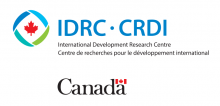
10 Jun 2008
Montreal, Canada - What can be done to cope with the scourge of global warming? Hear from those already trying to adjust to climate change as well as those researching the best ways to adapt to the challenge.
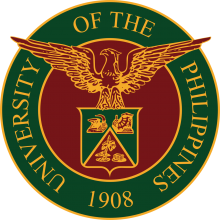
14 May 2008
UP Diliman, Quezon City, the Philippines - The UP Centennial Lecture Series is entitled A Centennial Conversation: "Anthropogenic Global Warming: Beyond the Hype" by Dr. Perry S. Ong.
Giants in history
Chinese biochemist Chi Che Wang (1894 - 1979), one of the first Chinese women to study abroad, advanced to prominent research positions at American institutions including the University of Chicago and the Northwestern University Medical School.
Ruby Sakae Hirose (1904 – 1960) was a Japanese-American scientist whose research contributed significantly to our understanding of blood clotting, allergies and cancer.
Chinese electron microscopy specialist Li Fanghua (6 January 1932 – 24 January 2020) facilitated the high-resolution imaging of crystal structures by eliminating interference.
Sálim Moizuddin Abdul Ali (12 November 1896 – 20 June 1987), commonly referred to as the Birdman of India, was the first person to conduct systematic surveys of birds from across India.
Haisako Koyama (1916 – 1997) was a Japanese solar observer whose dedication to recording sunspots – cooler parts of the sun’s surface that appear dark – produced a sunspot record of historic importance.
Michiaki Takahashi (17 February 1928 – 16 December 2013) was a Japanese virologist who developed the first chickenpox vaccine.
Toshiko Yuasa (11 December 1909 – 1 February 1980) was the first Japanese female physicist whose research on radioactivity shed light on beta decay – the process in which an atom emits a beta particle (electron) and turns into a different element.
Angelita Castro Kelly (1942-2015) was the first female Mission Operations Manager (MOM) of NASA. She spearheaded and supervised the Earth Observing System missions during its developmental stage.
Malaysia’s first astrophysicist, Mazlan binti Othman (born 11 December 1951) was instrumental in launching the country’s first microsatellite, and in sending Malaysia’s first astronaut, Sheikh Muszaphar Shukor, into space.
Known as Mr. Natural Rubber, chemist and researcher B. C. Shekhar (17 November 1929 – 6 September 2006) introduced a number of technical innovations that helped put Malaysia’s natural rubber industry on the world map.
Shinichiro Tomonaga (31 March 1906 – 8 July 1979), together with Richard Feynman and Julian Schwinger, was awarded the Nobel Prize in Physics in 1965, for their contributions to advance the field of quantum electrodynamics. Tomonaga was also a strong proponent of peace, who actively campaigned against the proliferation of nuclear weapons and promoted the peaceful use of nuclear energy.
South Korean theoretical physicist Daniel Chonghan Hong (3 March 1956 – 6 July 2002) achieved fame in the public sphere through his research into the physics of popcorn.
Japanese chemist Kenichi Fukui (4 October 1918 – 9 January 1998) was the first Asian scientist to be awarded the Nobel Prize in Chemistry. Together with Roald Hoffman, he received this honour in 1981 for his independent research into the mechanisms of chemical reactions.
Chinese palaeontologist, archaeologist and anthropologist Pei Wenzhong (January 19, 1904 – September 18, 1982) is regarded as a founder of Chinese anthropology.
Physicist Narinder Singh Kapany (31 October 1926 – 4 December 2020) pioneered the use of optical fibres to transmit images, and founded several optical technology companies. Born in Punjab, India, he worked at a local optical instruments factory before moving to London for PhD studies at Imperial College. There, he devised a flexible fibrescope to convey images along bundles of glass fibres.
Japanese physicist Ukichiro Nakaya (1900-1962) made the world’s first artificial snowflakes. He started his research on snow crystals in the early 1930s at Hokkaido University, where there is an unlimited supply of natural snow in winter. By taking over 3,000 photographs, he established a classification of natural snow crystals and described their relationship with weather conditions.
The field of solid-state ionics originated in Europe, but Takehiko Takahashi of Nagoya University in Japan was the first to coin the term ‘solid ionics’ in 1967. ‘Solid-state ionics’ first appeared in 1971 in another of his papers, and was likely a play on ‘solid-state electronics’, another rapidly growing field at the time.
Charles Kuen Kao (Nov. 4, 1933 to Sept. 23, 2018) was an engineer who is regarded as the father of fibre optics. His work in the 1960s on long distance signal transmission using very pure glass fibres revolutionized telecommunications, enabling innovations such as the Internet.
Chika Kuroda (24 March 1884 – 8 November 1968) was a Japanese chemist whose research focussed on the structures of natural pigments.
Motoo Kimura (13 November 1924 – 13 November 1994) was a Japanese theoretical population geneticist who is best remembered for developing the neutral theory of molecular evolution.
Meghnad Saha (6 October 1893 – 16 February 1956) was an Indian astrophysicist best known for formulating the Saha ionization equation which describes the chemical and physical properties of stars.
Sir Jagadish Chandra Bose (30 November 1858 – 23 November 1937) was a scientist and inventor who contributed to a wide range of scientific fields such as physics, botany and biology.
Osamu Shimomura (27 August 1928 – 19 October 2018) was a Japanese organic chemist and marine biologist who dedicated his career to understanding how organisms emitted light.
Subrahmanyan Chandrasekhar (19 October 1910 – 21 August 1995) was an Indian astrophysicist who studied the structure and evolution of stars.
Joo-myung Seok (November 13, 1908 – October 6, 1950) was a Korean butterfly entomologist who made important contributions to the taxonomy of the native butterfly species in Korea.
Mathematician Maryam Mirzakhani (12 May 1977 – 14 July 2017) was the first and only woman and Iranian to date to win the Fields Medal in 2014 for her work on curved surfaces.
Sir Chandrasekhara Venkata Raman (7 November 1888 – 21 November 1970) was an Indian physicist who performed ground-breaking research in the field of light-scattering.
Mohammad Abdus Salam (29 January 1926 – 21 November 1996) was a theoretical physicist and the first Pakistani to receive a Nobel Prize in science.
Srinivasa Ramanujan (22 December 1887 – 26 April 1920) was a math prodigy and widely considered one of India’s greatest mathematicians. Despite having almost no formal training in mathematics, he made substantial contributions to mathematical analysis, number theory, infinite series and continued fractions.
Gopalasamudram Narayanan Ramachandran (8 October 1922 – 7 April 2001) is best known for developing the Ramachandran plot to understand the structure of short chains of amino acids, known as peptides.
Hitoshi Kihara (1893 – 1986) was one of the most famous Japanese geneticists of the 20th century. One of his most significant contributions was identifying sex chromosomes (X and Y) in flowering plants.
Chien-Shiung Wu (31 May 1912 – 16 February 1997) was an experimental physicist who made several important contributions to nuclear physics. Wu worked on the Manhattan Project – a top-secret program for the production of nuclear weapons during World War II and helped to develop a process for separating uranium into U235 and U238.
Meemann Chang (born 17 April 1936) is a Chinese palaeontologist who studied the fossils of ancient fish to understand the evolution of life. By examining fossils, she uncovered new insights on how vertebrates, animals with a backbone, migrated from the sea and became adapted to live on land.
Bibha Chowdhuri (1913 – 2 June 1991) was an Indian physicist who researched on particle physics and cosmic rays. In 1936, she was the only female to complete a M.Sc. degree at the University of Calcutta.
Lin Lanying (7 February 1918 – 4 March 2003) was a Chinese material engineer remembered for her contributions to the field of semiconductor and aerospace materials. Lanying was born into a family who did not believe in educating girls and she was not allowed to go to school.
Japanese geochemist Katsuko Saruhashi developed the first method and tools for measuring carbon dioxide in seawater


